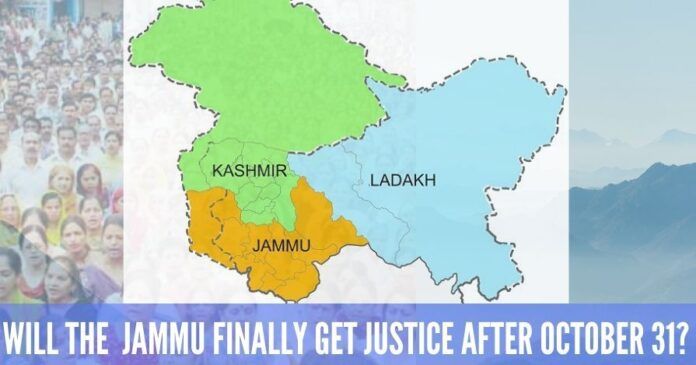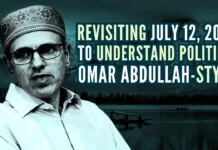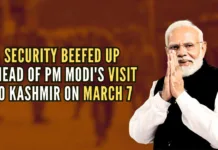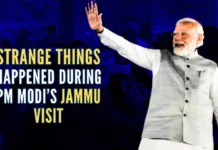
The people of Jammu have suffered huge socio-economic and political losses during the past 72 years. Hence, they deserve special care, extra care and special treatment.
Now that the Narendra Modi Government has abrogated Article 370, Article 35A and J&K Constitution, it’s time to reflect on their baneful influence on the nation, polity and society in general and Jammu and Ladakh in particular. Both these Articles plus the separate Constitution had only promoted communalism, separatism and the menace of corruption, granted unbridled legislative, executive and financial powers to the Kashmir-based ruling elite and led to the rise of a situation under which Jammu and Ladakh were considered as Kashmir’s two colonies where the life of the people was not one of the political, social, cultural and economic aspirations but one of slavery and servitude.
The status of these two regions, whose watchword and battle-cry all along was the state’s complete merger with India and application of the Indian Constitution to the state in full and a dispensation that treated all the state’s three regions equally at all levels and in all spheres, was like the status British India and the Princely States had under the Imperialist London. In other words, Articles 370 and 35A established the hegemony of Kashmir and Kashmir-based ruling elite on Jammu and Ladakh and rendered the people of these two willfully ignored regions ineffective and unreal for all practical purposes. They were no more than second or third-grade subjects.
It’s heartening that the people of Jammu from time to time asserted, struggled and fought against the discriminatory policies being formulated and implemented ruthlessly by the Kashmiri ruling elite to obtain their due share and had to sacrifice their lives in the process
The share of the people of Jammu and Ladakh in the civil secretariat, vital service sector, Legislative Assembly, financial institutions, boards and corporations; and revenue, finance, law, police and nation-building education departments was just negligible. The story of road development, infrastructure development, power generation, tourism promotion, the share of Jammu youth in the technical and professional colleges and Agriculture University was as also negligible. The worst part of the whole situation was that the youth of Jammu were rigorously excluded even from the technical and professional institutions and Agriculture University located in Jammu itself. Such was the nature of the polity handed down to us by the New Delhi-backed Kashmiri ruling elite. And, this, notwithstanding the fact that Jammu contributed more than 70 per cent revenue to the state exchequer every year.
It is a sad reflection that the powers-that-be in New Delhi always took Jammu and Ladakh for a ride or that it considered these two distinct provinces irrelevant could be seen from the fact it made Sheikh Abdullah, who had no locus standi in the matter, a party to the state’s accession in October 1947 and entered into negotiations with Sheikh Abdullah in 1952 leading to what the vested interests call “Delhi Agreement”. There exists no such thing as a “signed” Delhi Agreement of 1952. It was a mere statement made by PM Nehru on the floor of the Lok Sabha. It must remain a matter of concern that Nehru always ignored and overlooked the sane counsels of Home Minister Sardar Patel, the Iron Man of India. Had the Sardar handled the Jammu & Kashmir issue, he would have integrated the state into India like he integrated the over 500 princely states, including Hyderabad and Junagarh. India would not have paid through its nose for such a long time, had Jammu & Kashmir been under the Sardar’s Home Ministry, and not under the Nehru’s Ministry of Foreign Affairs.
Not just this, Indira Gandhi also entered into negotiations with Sheikh Abdullah in 1974 and Rajiv Gandhi with Farooq Abdullah in 1986. The result was: The Indira-Sheikh Accord and Rajiv-Farooq Accord. All this should clinch the whole issue and establish that Jammu and Ladakh had no place whatsoever in New Delhi’s scheme of things. It would not be out of place to mention here that all these accords resulted in the alienation of Kashmir from India, subversion of the democratic processes, neglect of Jammu and Ladakh and dangerous respectability to the politics of separatism. In addition, all such actions, including the application of Articles 370 and 35A, on the one hand, helped Pakistan, and on the other, denied the people of Jammu and Ladakh the right to lead a dignified life as full-fledged Indians.
It’s heartening that the people of Jammu from time to time asserted, struggled and fought against the discriminatory policies being formulated and implemented ruthlessly by the Kashmiri ruling elite to obtain their due share and had to sacrifice their lives in the process. It was not for nothing that the successive governments in the state had to appoint high-powered commissions and committees to look into the complaints of the people of Jammu and Ladakh and recommend measures which could meet their urges, aspirations and needs.
The Gajendragadkar Commission (1968), the Wazir Commission (1983) and the Singhal Committee (1999), to mention only a few, all candidly acknowledged that the successive governments in the state gave a raw deal to Jammu and Ladakh. The Gajendragadkar Commission recommended for Jammu an empowered Regional Development Board and the office of Deputy Chief Minister in case the Chief Minister was from Kashmir. It also suggested a berth in the Cabinet for Ladakh. The Wazir Commission recommended three additional districts for Jammu – Samba, Kishtwar and Reasi. The RP Singh Committee asked the state government to make all the seats available in the Jammu province-located professional and technical institutions, including medical, dental and engineering colleges the sole preserve of the Jammu youth. In fact, it recommended admission to these institutions as per the rules laid by the Jammu and Kashmir Universities Act of 1969. It’s a different story that bulk of the recommendations of these commissions and committees were not implemented by the Kashmiri ruling elite for reasons not really difficult to fathom.
Now that Jammu & Kashmir State is also set to be bifurcated into UT of Jammu & Kashmir and UT of Ladakh on October 31, it is hoped that New Delhi would take into consideration the aspirations of the ignored people of Jammu and hand down a dispensation that dispensed justice to them. They have suffered huge socio-economic and political losses during the past 72 years. Hence, they deserve special care, extra care and special treatment.
Note:
1. The views expressed here are those of the author and do not necessarily represent or reflect the views of PGurus.
- ‘Kashmir My core constituency’: Revisiting July 12, 2003 to understand politics, Omar Abdullah-style - March 15, 2024
- Total deviation from traditional approach: Seven takeaways from PM Modi’s March 7 Srinagar visit - March 9, 2024
- Status of political parties: Why is further J&K reorganization imperative? - March 1, 2024











If you may, shall I comment on the map of in this article on the State of J&K ( as existed till the 18th Oct 1947 ) – The region of Ladakh should encompass the Balti speaking areas under Pakistani Occupation. Ladakh should be represented with cities like Skardu. But your map cuts off Ladakh at the 1950 cease fire line. People in Kargil and Baltistan speak the same Balti language and share the same Shia sect of Islam. I must also commend you for having rightly drawn up the map of Jammu by including the Punjabi/Dogri speaking areas of Jammu (UT of J&K) and under Pakistani occupation (Mirpur, Kotli, Hajipir and Poonch).
Wishing the new UTs all the best
Jammu and Kashmir will be very prosperous part of Hindustan with blessings of MAHADEV. All terrorists and terrorism will be killed and destroyed and those living illegally will be deported to their country of origin. If Pakistan unites with Hindustan then they will become the most powerful nations together. Let us pray for peace.